Varanasi or Kashi or Banaras is a city with rich mythological, religious, and historical significance. In this blog, we discuss the early history, the Mughal invasions, and the contributions of communities that made Varanasi what it is today.
One of the oldest cities in the world, dating back 2,500 years, Varanasi is the epitome of spiritualism, a step in the traditional culture of India. It glorifies Hindu mythology, which has made it an ideal location for devotees, pilgrims, and worshipers from time immemorial.
People believe if you die here, you would attain salvation and be free from the cycle of birth and rebirth.
Varanasi has a long history that involves Mughals, Marathas, and more that played a huge role in shaping the attractions we see in Varanasi today.
If you are keen to know about the not so talked history of Varanasi, keep reading.

The City of Shiva
A legend says Lord Shiva found Kashi which was his favorite abode. People believe that Lord Shiva and Goddess Parvati walked here at the beginning of time. Lord Rama came to perform penance after slaying Ravana. Later, Lord Krishna used it as a battlefield to set fire to an imposter Krishna.
Though the origin of Kashi is unknown till today, it still draws millions of devotees to this city who bathe in the holy Ganga river and wash away their sins.
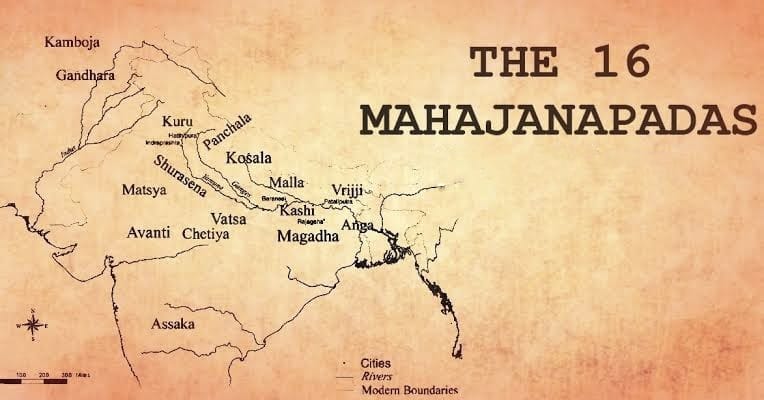
Early History of Varanasi
The Aryans were the first settlers in the Ganga Valley, as per historians. By the second millennium BC, the city became the center of Aryan religion and philosophy. In addition, Varanasi was used as a major commercial and industrial center for silk and muslin fabrics, perfumes, ivory work, and sculptures.
As the 6th century BC came by, Varanasi became the capital of the Kingdom of Kashi. (This was an ancient kingdom of India whose existence goes back to the Iron Age.
King Kashi expanded Kasi city, who was the grandson of kshatravriddhas and the great-grandson of Ayu. So ‘Kashi’ was named after king Kasha. When the 6th century BCE began, there were 16 ‘mahajanapadas’ – kingdoms that existed in ancient India – in north India and Kashi was one of them.)
At the same time, Lord Buddha was giving his first sermon just 10 km away in Sarnath, another important Buddhist pilgrimage site.
Many learned men also found their way to Varanasi due to its religious, educational, cultural, and artistic importance. One of them was Chinese traveler Hsüan Tsang who came to India around AD 635.
After being a flourishing city for centuries, Varanasi’s decline started in 1194 CE and continued for three centuries under Muslim rule. During this time, many temples, and educational centers were destroyed and the scholars had to say goodbye to Varanasi.
Mughal Emperor Akbar came to Varanasi in the 16th century and provided some religious respite to the city. But it was a short-lived dream as tyrannical Mughal ruler Aurangzeb accessed the throne in the late 17th century.

Varanasi Under the Muslims
The Islamic invasions in Varanasi started in 1033 CE. Nialtagin, the son of Mahmud Ghazni (Sultan of the Ghaznavid Empire and the pioneer of the Islamic faith), was the first one to plunder the city.
At the end of the 11th century, the Gahadavala dynasty – a Rajput dynasty – was established by Chandradeva who regained control of Varanasi. He built the Adi Keshava shrine in gold.
Kutubuddin Aibak, Muhammad Ghori’s commander again attacked Varanasi in 1194 CE, massacred thousands of Hindus, and forced them to convert under the threat of the sword.
Not just this, more than 1000 ancient Hindu temples were demolished. The amount of money or things of value looted were taken away on some 1400 camels.
Hindus Recaptured Varanasi
After a while, Hindus fought back and recaptured Varanasi in 1197 CE. But Kutubbudin was no less and he attacked them again. By 1212 CE, Hindus continued to resist and eventually, he lost control of Varanasi.
At the same time, Visvarupa Sena from Bengal established a massive Yupa and Vijay Stambh (victory tower) in the center of Varanasi, announcing it the ”Kshetra of Shiva Visveshwara”.
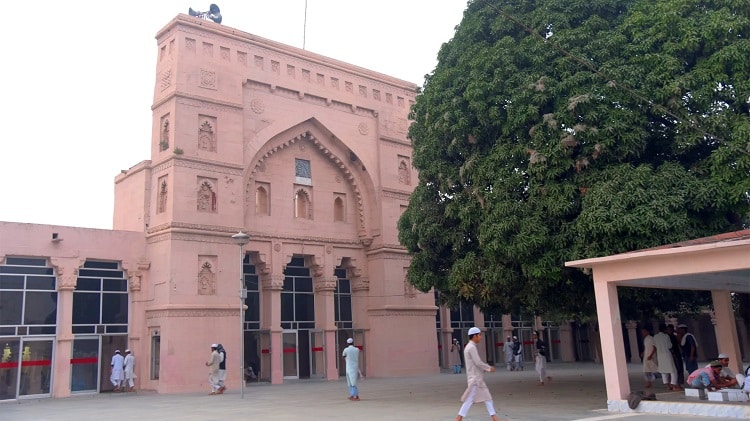
Muslims Conquered Varanasi Again
This back-and-forth battle of capturing Varanasi continued and Muslims successfully regained their control of the city. Not just control, they also impose the Jizya tax on Hindus of Varanasi.
In 1297 CE, the Hoysala King Narasimha III stood in solidarity with Varanasi Hindus and took a pledge to preserve the dignity of Kashi. On behalf of residents in Varanasi, he donated an entire village to pay the Jizya tax.
Soon, many Hindu temples were erected again by 1353 CE, including Padmesvara and Manikarnikesvara. Soon, they were destroyed.
Alauddin Khilji came to Varanasi in 1376 CE and attached many temples. He demolished Atala Devi Mandir and built the Atala mosque on the site. His governor also constructed mosques Arhai Kangara, Chaukhambha, and Golaghat from demolished Hindu temples.
The Gupta period’s stone pillars and temples were plundered by the Shirquis in 1393 CE and used as stools in their mosque gardens.
Today, the existence of Paramesvara stones and the Padmesvara inscription in the Lal Darwaza Mosque shows how Muslims seized and tore down temples to build Islamic monuments.
Sikandar Lodi’s Devastating Blow
Sikander Lodi ordered the complete destruction of all Hindu temples in Varanasi in 1496 CE. All the rebuilt shrines were nothing but ruins.
The great learning and education center that enriched Varanasi was completely dismantled. Scholars left the city and fled to the South. After 50 years, Hindu scholars from Karnataka and Maharashtra decided to resurrect Sanskrit learning in Varanasi.
Akbar in Varanasi
When Akbar came to Kashi in 1567 CE for the second time, he ordered the city to be knocked down again. For some time, there was some religious peace. Many Rajput kings like Man Singh and Raja Todarmal used this chance to strengthen Varanasi by constructing temples and Ghats.
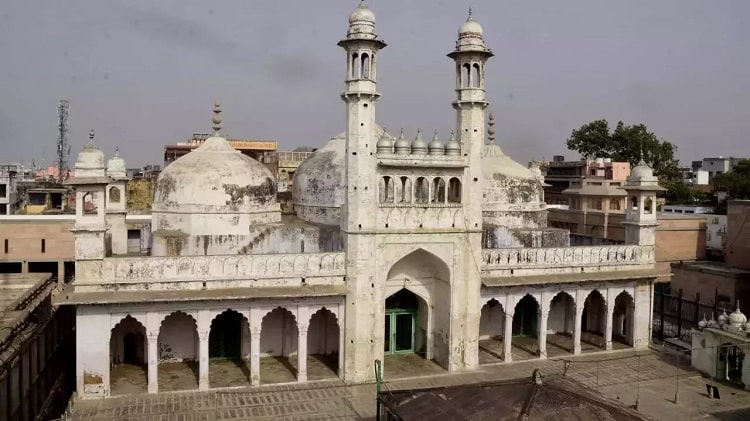
The Construction of Gyanvapi Mosque Under Aurangzeb
Varanasi faced the worst it had ever seen under the rule of the Mughal Emperor, Aurangzeb.
Aurangzeb constructed the Gyan Vyapi mosque on top of the rebuilt Visveshwara (Vishwanath) temple in 1669. He also built the Dharahara mosque on the remains of the Bindu Madhava temple and on the site of Krittivas Eshwara temple, Alamgiri mosque.
Aurangzeb also renamed Varanasi to Muhammadabad and issued coins under the same name. Through these deliberate acts, Aurangzeb wanted to underline Islam supremacy in Hindu places of worship.
The destruction of the Kashi Vishwanath Temple was a big shock to all Hindu communities. It angered Shivaji Maharaj’s mother Jijabai so deeply that she challenged her own son to capture Sinhagad and challenge Aurangzeb’s barbarity.
After Aurangzeb died, the rebuilding of Varanasi commenced, thanks to the efforts by Marathas, Rajputs, Bengalis, and others that Visheshwara (Vishwanath) and other shrines rose again to their initial glory.
Almost no temple is in its original condition, yet it is a testimony to the Hindu resilience that numerous sites were rebuilt and ancient Vigrahas reestablished whenever possible.
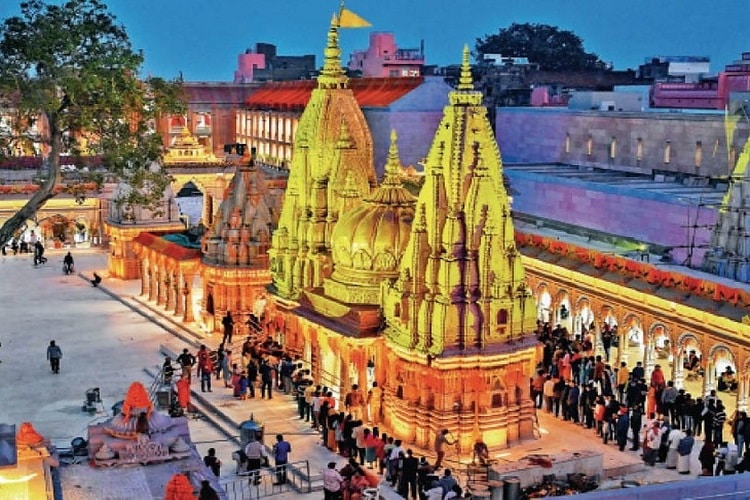
Maratha’s Role in Rebuilding Varanasi
It all began in the 18th century when the Maratha Empire rose in the subcontinent. With this, Varanasi witnessed a huge surge in the rebuilding of temples and Ghats on the banks of the river Ganga.
Aurangzeb destroyed the original Kashi Vishwanath Temple, a center of all spiritual activity in Varanasi. The new one was rebuilt by Ahilyabai Holkar in the 1880s, the Queen of Malwa at the time.
In 1835 CE, Maharaja Ranjit Singh, Maharaja of the Sikh Empire, donated 1 ton of gold to the Kashi Vishwanath Temple, for plating the dome and doors.
Plenty of tourist attractions will delight your heart and soul throughout this North India Temples Tour including a visit to Haridwar, Rishikesh,Varanasi and Mathura inviting hordes of pilgrims every day.

Manikarnika Ghat, Scindia Ghat, and Dashashvamedh Ghat were also great contributions by the queen that are examples of the forgotten memory of Maratha heritage in Varanasi.
A statue of Ahilyabai near Kashi Vishwanath Dham keeps the forgotten memory of Maratha Heritage in the holy city alive.
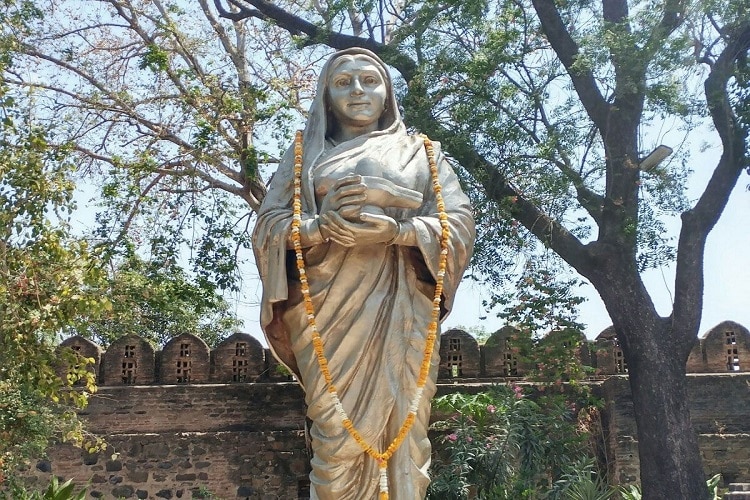
Bajirao II was the last of the Peshwas and built the Bajirao Ghar, which is an extension of the old Tulsi Ghat. Close to the ghat is a temple of ‘Dattatrayeshwara’ today, which is devoted to the deity Dattatreya, revered by Peshwas in Maharashtra.
Peshwa Saheb came to Kashi in 1734 and a saint called Swami Advaitanand blessed him, he built a ghat in his name.
Though Marathas never ruled Varanasi directly, their contribution still remains alive even today.
The 18th century was a turning point that brought back the last glory to Varanasi. The city became an independent kingdom with Ramnagar as its capital. Britishers declared it a new Indian state in 1910 and after India gained independence, Varanasi came under Uttar Pradesh.
Today, Kashi Naresh Anant Narayan Singh of the Narayan Dynasty, known as the Maharaja of Benares still lives in Ramanagar Fort even though his royal title was abolished in 1971.
If you wish to visit the holy city of Varanasi, choose the best time to visit Varanasi that is the winter months. In the monsoon season, you will encounter a tremendous amount of people. Because July to August are the Savan months (auspicious month among Hindus), many devotees visit Varanasi during these months. In the second half of August, the Ghats are often flooded.
To make the most of your visit, book a Varanasi tour package to explore and experience the city’s rich culture, history, and spirituality. The package includes all the amenities that will make your trip more comfortable.
Follow Indian Holiday for our latest weekly blog series on ‘The Changing Landscape of Indian cities,’ where we bring light to the unique heritage of famous Indian cities.





Leave a Comment